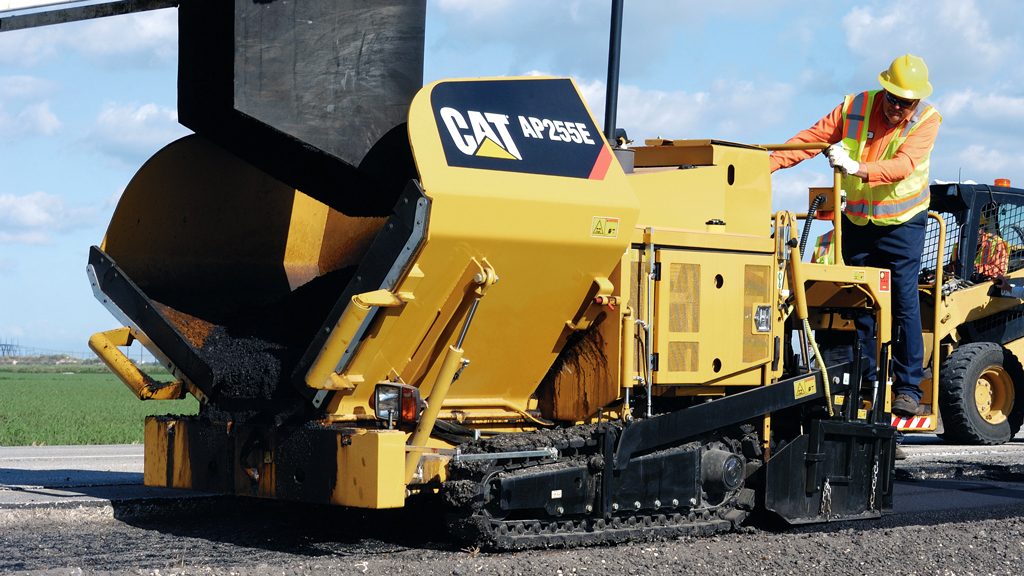Heat Design Equipment, based out of Kitchener, Ont., has been innovating hot-in-place recycling (HIPR) technology for 15 years.
The company designs and manufactures several types of equipment for asphalt maintenance that have been purchased by customers all over North America.
HIPR, which is the process of heating asphalt, removing it and paving it again, offers several benefits compared to traditional recycle and pave projects, including the ability to recycle 100 per cent of the existing asphalt. It also uses less energy than other rehabilitation methods; doesn’t require large amounts of trucks hauling in new materials and hauling out the old asphalt (millings); has less aggregate breakage versus cold planning; and the initial cost of HIPR is less than traditional hot mix asphalt (HMA).
“With the opportunity to complete some substantial work we have been able to quickly move the technology forward since 2015,” says Ray Riddell, specialty sales of Heat Design Equipment. “We have been forging partnerships with agencies to develop a cost-effective quality producing process that offers a long-term solution to highway degradation starting at the longitudinal construction joint.”
A longitudinal joint is the interface between two adjacent and parallel HMA mats; it is often the section where two highway lanes meet.
These sections of asphalt have more voids (like bubbles in an Aero bar) than the rest of the highway. Applying HIPR at longitudinal joints greatly decreases highway surface damage and highway maintenance issues down the road.
Last year, the company’s contracting company, Infrared Pavement Repair, completed a 24-kilometre stretch of the longitudinal joint of Highway 401 near Cobourg, Ont. The process included skid steers that pulled several trailers equipped with infrared heaters and propane tanks and a UTV equipped with a paver box working in line formation. When all the machines work together, they form what is called a “joint train.”
Although the Ministry of Transportation Ontario (MTO) was largely satisfied by the results of the groundbreaking technology, the MTO did express some technical concerns about the process, including overheating of the surface course, maintaining a constant cutting depth, maintaining a homogenous mixture, control of the paving temperature and sustaining the underlying mat temperature.
Innovation sometimes means missteps. However, when innovating, every misstep brings you one step closer to a better solution, says Riddell.
Heat Design Equipment acted on the concerns by creating a new system that overcomes the challenges present on the Highway 401 job.
To address overheating of the surface course, the company increased the length of the train and reserved a section of each trailer to be heaterless, which allows for the surface course to cool — a process known as “soak time.”
“This experience is crucial in working out design and process flaws. With input and support from all parties involved including the Ministry of Transportation Ontario, State of Tennessee, Region of Waterloo and the City of Hamilton, we will be able to have a viable process that can be done on highways around the world,” he says.
In order to maintain a constant depth, the company now uses automation. They added a hydraulic milling machine, replacing the scarification teeth from the previous model, which can be precisely set to a desired depth without compromising the process.
In order to improve paving performance, the company purchased a new Cat AP255E asphalt paver. The 46-hp, single-lane paver is ideal for cycle paths, sidewalks and repair work. The unit, owned by Heat Design Equipment, is equipped with a central paving attachment that reduces the machine’s paving range from 55 to 122 inches to 20 to 55 inches, which is ideal for the 28-inch cut width performed by the milling head.
Since the new mat is denser than the previous mat, more asphalt must be added.
“With our new joint train, we can act like a shuttle buggy and paver operation, where we can pick up the material reheat with overhead heaters on the pickup machine, and have consistent flow of material,” says Matt Kieswetter, vice-president of Heat Design Equipment.
This year, the company is focusing on improving the soak time and heater temperature to eliminate burning of the surface; matching the rejuvenator application to the train speed; using a better milling head for precise depth control; improving material pickup; keeping temperatures in a good working range; prefilling voids with new asphalt prior to HIPR; using a highway paver instead of paver box for better compaction and quality; and switching to oscillating roller technology developed by Hamm, because it is best suited for narrow width compaction.



Recent Comments